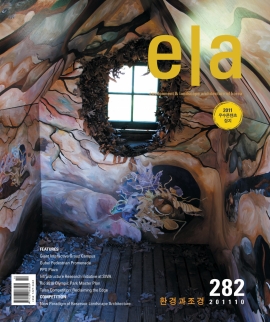Rio 2016 Olympic Park Master Plan
리우데자네이루는 그곳이 장려하는 도시 구조와 놀라운 자연 환경 사이의 독특하게 밀접한 관계로 유명하다. 올림픽 파크는 Barra da Tijuca와 Jacarepagúa 석호의 중심부에 위치한다. 이런 해안 석호는 주변의 물과 공생하는 고유한 동식물의 서식지인 활기찬 습지를 특징으로 한다. 이런 섬세한 생태계는 우리의 지속가능한 전략의 핵심이다. 이는 석호의 생태를 보존하는 것뿐 아니라, 인간과 환경 사이에도 비슷한 공생 관계를 창조하는 것을 목표로 한다.
다른 많은 위대한 도시에서처럼 우리의 마스터플랜은 비범하고 에너지가 넘치는 공간이 화합하는 강력한 시퀀스를 만들고자 한다. 위대한 도시는 강력한 이미지와 일관된 도시 구조에 기여하는 가로와 공간과 공원의 네트워크로 이루어져 있어, 일하고, 놀고, 모일 기회를 만든다. 이런 네트워크는 강력한 문화적 화합을 지지하고, 비즈니스와 사교, 레크리에이션의 프레임워크를 형성하는 도시 구조를 규정한다. 마찬가지로, 마스터플랜은 지속가능한 도시 구조의 새로운 세대를 위한 씨앗을 뿌리는 한편, 올림픽 경기가 열리는 동안의 수많은 사람들과 행동을 지원할 것이다.
특징
복원된 워터프론트
복원된 석호의 가장자리는 지속가능성이 사람들의 삶을 높이고, 리우데자네이루의 도시의 미래를 위한 새로운 랜드마크를 만들 수 있다는 메시지를 보낼 수 있는 기회이다.
공공 이벤트 중심지
공공 용도로 대상지의 중심부를 남겨 두는 것이 이 디자인의 핵심 요소이고, 이는 올림픽 파크가 언제나 포괄적인 장소가 될 것임을 분명히 한다. 방문자와 선수, 주민들은 피크닉 잔디밭과 Abraço 플라자, 산책로, 메달 플라자, 비스타 파크를 즐기러 이 역동적인 구역으로 몰려올 것이다. 주변은 변하겠지만 중심지는 올림픽 경기 후에도 대중을 포옹한다는 목적을 유지하며 하나의 유산으로 남을 것이다.
그린웨이 네트워크
공원과 선형 그린웨이의 네트워크는 우리의 도시 디자인 전략의 핵심이고, 대상지 구조의 강력한 특징이다. 이 네트워크는 도시의 가로 그리드에서 분리되어, 보행자와 자전거 이용자가 차량 교통에 방해 받지 않고 이동할 기회를 제공한다.
도시 숲
올림픽 경기장의 대부분이 모인 이곳에는 집단적인 아이덴티티가 부여되어, 올림픽 훈련 시설(COT: Olympic Training Facility)을 형성한다. 경기장이 모인 이 “도시 숲”은 나무들의 숲과 짝을 이루어 친밀한 규모의 구역을 형성할 것이고, 사람들이 이곳을 찾아와 하루를 보내고,선수들이 훈련을 위한 최고의 장소로 이곳을 선택하게 될 것이다.
올림픽 대로
대상지를 관통하는 아치인 주요 상업축이 대상지를 서쪽에서 남쪽으로 가로지른다. 올림픽 경기가 열리는 동안 이 보행자 아치에는 기념품 가판대와 푸드 홀, 스폰서 텐트가 늘어설 것이다. 향후 Legacy mode에서 이 축은 쇼핑과 대중교통, 선형 공원, 보행자 산책로
를 가진 새로운 주거 지역의 가장자리를 활성화시키는 다양한 용도를 가진 가로로 발전할 것이다.
The embrace is a pure Brazilian gesture. An embrace unifies, and is a universal symbol of love and acceptance, a theme which defines the Olympic Games and provides a lasting identity for our 2016 Olympic Master Plan.
Rio is famous for the uniquely close relationship it fosters between its urban fabric and its stunning natural environment. The Olympic Park sits in the heart of Barra da Tijuca and the Jacarepagúa Lagoon. Coastal lagoons like this are characterized by vibrant wetlands that are home to unique flora and fauna that live symbiotically with the water around them. This delicate ecological circle is at the heart of our sustainable strategies. It aims not only to restore the lagoon ecology, but also to create a similar symbiotic relationship between people and their environment.
As in the design of many great cities, our master plan seeks to establish a cohesive and compelling sequence of extraordinary and energized spaces.
Great cities are comprised of networks of streets, places and parks that contribute to a strong image and a coherent urban structure, allowing opportunities for work, play and gathering. These networks define an urban fabric that supports great cultural cohesion and establishes a framework for business, socialization and recreation. Similarly, the masterplan will support the volume of crowds and activities during the Games, while sowing the seeds for a new generation of sustainable urban structure.
FEATURES
Restored Waterfront
The restored lagoon edge is an opportunity to send the message that sustainability can enhance people’s lives and create a new landmark for Rio’s urban future.
Public Events Core
Reserving the heart of the site for public use is a central element of the design and will ensure that the Olympic Park will always be an inclusive place. Visitors, athletes and residents will spill out into this dynamic area to enjoy picnic lawns, the Abraço Plaza, an interpretive walk, Medals Plaza, and Vista Park. Though its perimeter will shift, this core will remain intact from Games to Legacy with its purpose intact: to embrace the public.
Greenway Network
A network of parks and linear greenways is at the heart of our urban design strategy and leaves a strong mark in the fabric of the site. This network will shift off of the urban street grid so that pedestrians and cyclists have the opportunity to travel the site unencumbered by vehicular traffic.
Urban Forest
Clustering a majority of the Olympic venues will give a collective identity to the venues, eventually forming the Olympic Training Facility (COT). This “rban forest”of venues will pair with a forest of trees to form an intimately scaled district, attracting visitors to spend the day and encourage athletes to choose it as an optimal place to train.
Olympic Boulevard
Arching across the site, from the west to the south, is the site’s main commercial spine. During the Games, this pedestrian arc will be lined with souvenir kiosks, food halls, and sponsor tents. The same axis will be developed into a multi-modal avenue during legacy mode, activating the edges of the new residential neighborhoods.
Designer _ Ron Turner(Gensler), Gerdo Aquino(SWA), Miguel Pinto Guilmarães
(MRG Arquitetos Associados)
Client _ Municipality of Rio de Janeiro, Brazilian Architect’ Institute
Location _ Rio de Janeiro, Brazil
Area _ 118 ha





